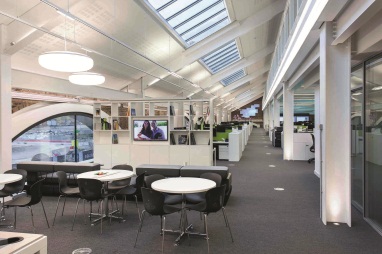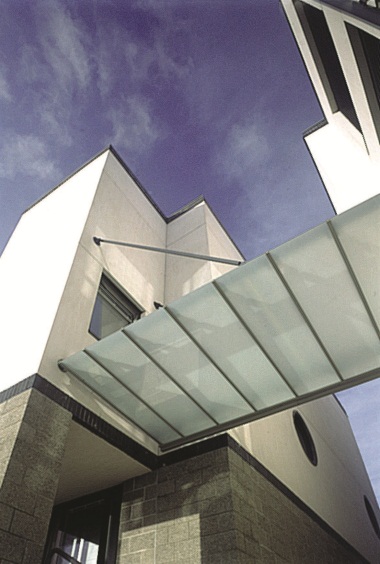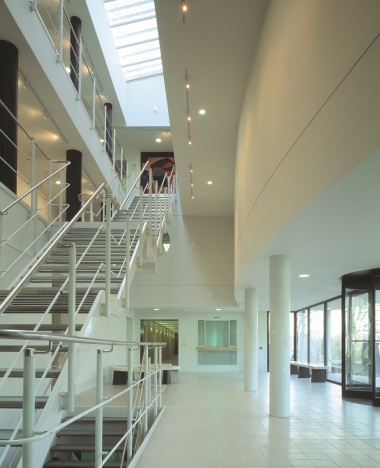During the last decade I undertook a European research project designed to disseminate information regarding the energy consumption and environmental performance of low-energy, non-domestic buildings in the UK, Germany, France, Italy and Spain. We started with a long list of 50, which was to be reduced to 25. Sounds easy but the more we looked into our chosen buildings the more we found they were not living up to expectations.
In most cases the energy consumption was higher and, in some cases, it was more than twice what energy simulations had predicted. When I later sent students out to study recent UK low-energy buildings, the story was the same. There are many reasons for this and not all to do with lighting, although lighting may be responsible for 30 per cent of the consumption in these buildings.

Axel Jacobs, daylighting principal at Hoare Lea, developed an online monitoring system at the firm’s Western Transit Shed office in London
Careful commissioning
When the annual energy consumption of a building is predicted it is assumed that daylight is being substituted for artificial lighting where possible and that adequate ventilation is being provided to offset any solar gain, particularly in naturally ventilated buildings. In the case of the former, functioning automatic controls are necessary in any open-plan space.
While occupancy switching is now a fairly mature technology, the same cannot be said of daylight-linked controls and it is now recognised that these control systems need very careful commissioning.
The sensor of the most commonly used system, the closed-loop system, measures the brightness – technically the luminance – of a section of the working plane determined by the angle of view of the sensor. It is not measuring the illuminance on the working plane but an illuminance that is modified by how reflective the sensed area is. This is determined by a number of factors, such as how reflective the desks, tables, floor, people and their clothes, papers and computers might be. And these things change. So minor variations may have little impact but,as an example, the movement of furniture could make the system unstable. In addition, while the illuminance provided by an array of lighting will hopefully be relatively uniform over the controlled zone, daylight from vertical glazing will have a form of exponential decay; the sum of the two varies over the sensed area and not linearly.
Understanding what we are measuring and the response time of the controls is vital. So a simple problem becomes more complex – hence good initial commissioning and regular recommissioning is necessary. However, I am not yet sure this has been taken on board.
Lighting fail
In 2007/2008 a visiting research student from Barcelona undertook a study of 15 daylight-linked lighting systems. Thirteen were found either never to have worked or to have switched out after a few months. Of the two reported as working, there were some doubts whether they were in full-time use. Certainly there are a number of systems now reported as working effectively but often with a dedicated person ensuring that efficacy. It reminds me of the situation we found in the building studies I mentioned.
One building that proved impressive was the Elizabeth Fry building at the University of East Anglia. It had a novel hollow-slab ventilation system, which worked well. It was monitored daily by a dedicated facilities manager who could note any change of use. The manager even improved the software as a result.
As mentioned, occupancy switching is a much more mature technology but that doesn’t mean there aren’t occasional commissioning errors. I recently saw an installation in a very well daylit (two-sided) student workplace where occupancy controls had been fitted but there was no simple on/off switching. Even in the summer holidays there were nearly always one or two students there so, despite high levels of daylight, the lights were always on.

The software hollow-slab ventilation system in the Elizabeth Fry building at the University of East Anglia is monitored and refined daily by a facilities manager

Tackling the issues
There are new developments in sensors. There are a number of groups looking at camera-based systems that can monitor a wide area and, with an intelligent controller, adjust the level of the luminaires. The wider problem may be the integration with automatic blind controls. If daylight-linked controls have yet to mature, blind controls also remain in their infancy, although solutions are beginning to emerge on the market.
A couple of years ago I went to look at some schools built under the Building Schools for the Future programme. The teachers complained vigorously about overheating and, on one occasion, a student had to be taken to hospital. Energy-consumption in these schools was much higher than expected. The schools were very well daylit but any ventilation systems linked to the rooflights were improperly commissioned, inadequately installed, had sensors missing or had been clearly omitted. No doubt the architects had designed fully functioning systems but out on site there had been some very expensive cost-cutting mistakes.
And don’t forget the occupants. One of these schools had carbon-dioxide monitors to control air quality. But the teachers had not been told what to do when an alarm was set off and the students quickly found they could set them off just by breathing on them. No doubt some bored but inventive kids might adapt the technique of my childhood by launching sticky projectiles at lighting sensors on the ceiling – and even scoring a bullseye. Extreme examples these may be, but these controls are set to be used in many environments and a diligent designer has to consider several eventualities to make sure a low-energy building lives up to its billing.





